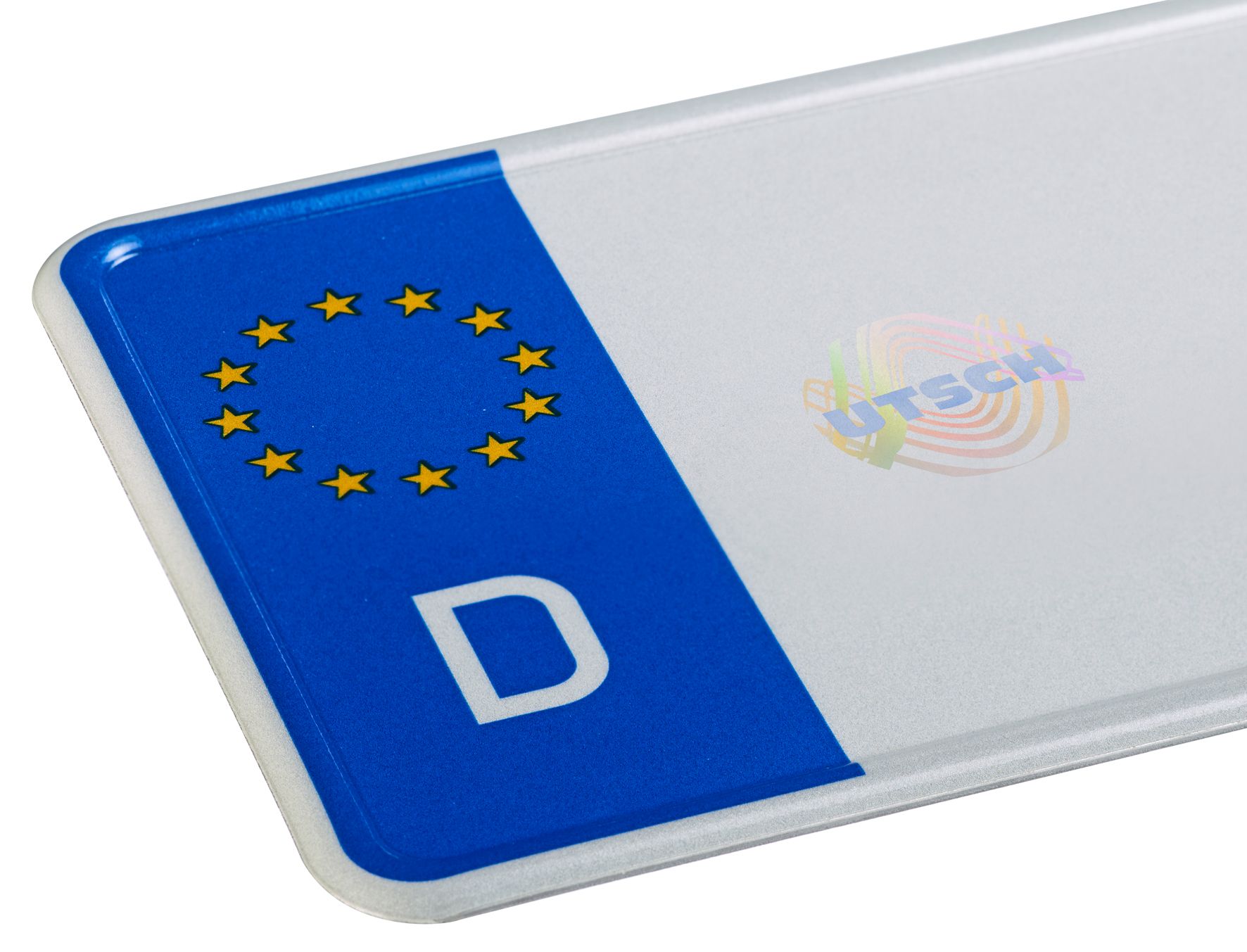Hannover Messe
Hannover Messe 2019: Original remains original
Together with the company Erich Utsch AG scientists of the Fraunhofer-Institut für Werkstoff- und Strahltechnik IWS have developed a process for the protection of license plates for motor vehicles. The development is triggered by the fact that many of the established product protection concepts are either too inflexible or uneconomical. The results will be presented at the Fraunhofer booth at the Hannover Messe 2019.
New product protection procedure simply and efficiently equips vehicle license plates with safety features
In cooperation with Erich Utsch AG, a research team of Fraunhofer IWS Dresden has developed a process that efficiently and safely transfers product protection features to vehicle license plates. The “Direct Laser Interference Structuring“ (DLIP) technology forms the basis. This process divides a coherent laser beam into two or more beams and superimposes them in a controlled manner on the die stamp surface. “We are talking about a so-called periodic modulation of the laser intensity,“ explains Tim Kunze, head of the team “Surface Functionalization” at Fraunhofer IWS. “The interference effect resulting from the superimposition allows the application of defined structures to surfaces. The applied microstructures provide rainbow effects that we can use as a product protection feature." In a second step, the stamp can be used as a tool in the hot embossing process. It transfers the DLIP product protection feature to the license plate foils for motor vehicles.
DILP process generates product protection features in a fast and cost-efficient manner
The special characteristic of the developed process is that it produces the DLIP product protection feature in a fraction of the time currently required. While established processes for the production of hologram labels often require costly infrastructures such as clean rooms, the product protection features can now be produced under normal conditions. The scientists of Fraunhofer IWS also succeeded in designing the process so flexible that complex surface geometries and product protection features can be generated. Together, these two advantages introduce the newly developed product protection approach as a promising option for simply and efficiently equipping vehicle license plates with safety features. “With the DLIP product protection feature, we now have an instrument in our hands that raises the safety standard for vehicle license plates to a new level in a highly flexible and cost-effective way. It makes all previous standards obsolete virtually overnight”, says Bernd Pfundstein, innovation representative in the product management department “License Plate Cutting” of Erich Utsch AG.
Curbing product piracy
According to a study by the German Engineering Federation (VDMA), almost three out of four companies in Germany are already affected by product piracy. According to the VDMA, patent applications and technological protection measures in particular are among the most popular methods for protecting products against unauthorized copying. Since patent infringements must always be proven separately, technological product protection measures in particular are becoming increasingly important. The new development of the Fraunhofer IWS Dresden aims in this direction.
The Fraunhofer Group for Light & Surfaces
Further information about the Hannover Messe 2019 and on the exhibits exhibited by the Fraunhofer Light & Surfaces Group can be received on a regular basis on our homepage under “Press & Events”.
The Fraunhofer Light & Surfaces Alliance brings together the expertise of six Fraunhofer Institutes. The institutes combine coordinated competencies in the fields of laser manufacturing processes, laser beam sources, measurement technology, medicine and life sciences, optical systems and optical manufacturing, EUV technology, process and system simulation, materials technology, micro- and nanotechnology, thin-film as well as plasma and electron beam technology.
